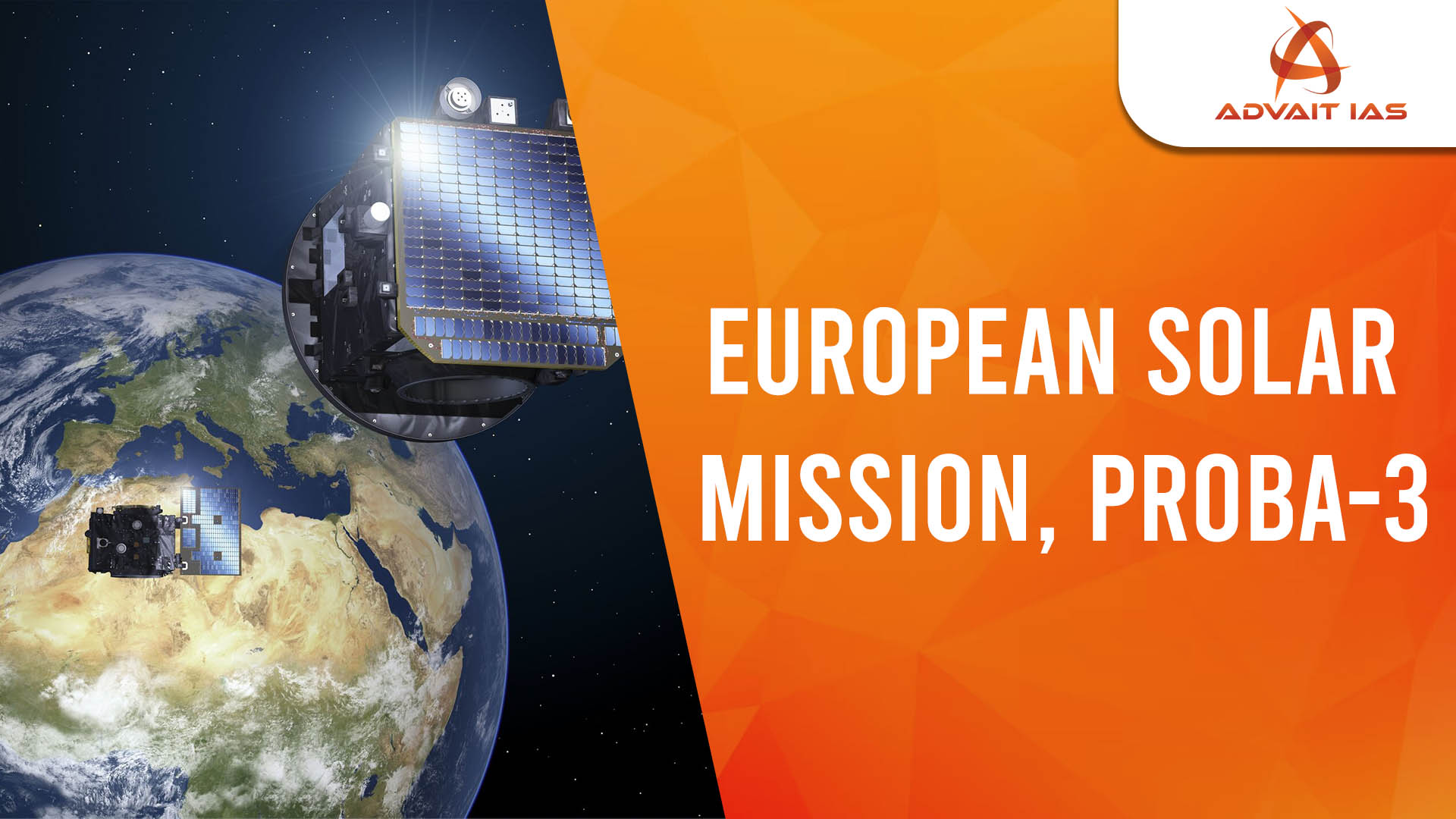Significance of European Solar Mission, Proba-3, Launched by ISRO
Overview of the Mission
- The Indian Space Research Organisation (ISRO) will launch the European Space Agency’s (ESA) Proba-3 mission on December 4, using the PSLV rocket.
- The mission aims to study the solar corona, the outermost and hottest part of the Sun’s atmosphere.
- Proba-3 marks the first-ever “precision formation flying”, where two satellites will maintain a fixed configuration in space.
Key Features of Proba-3
- Cost and Design:
-
- Developed at an estimated cost of 200 million euros.
- Mission lifespan: 2 years.
- Orbits in a highly elliptical path (600 km x 60,530 km) with an orbital period of 7 hours.
- Satellite Configuration:
-
- Comprises two satellites:
- Occulter Spacecraft (200 kg).
- Coronagraph Spacecraft (340 kg).
- Satellites fly in tandem, separated by a fixed distance of 150 meters, mimicking a natural solar eclipse.
- Scientific Objectives:
-
- Formation of an artificial solar coronagraph to block the Sun’s bright light and observe its corona in detail.
- Enables observations of solar phenomena such as:
- Solar storms.
- Solar winds.
- Space weather events.
Instruments Onboard Proba-3
- ASPIICS: Captures images of the corona by blocking sunlight with a 14-meter occulting disk.
- DARA: Measures total solar energy (solar irradiance).
- 3DEES: Studies electron flux and space weather.
Significance of Proba-3
- Scientific Importance:
-
- Proba-3 will create a stable artificial solar eclipse, allowing detailed observation of the corona for up to 6 hours annually.
- Helps study the Sun’s corona, a critical area for understanding space weather and solar phenomena.
- Unique Approach:
-
- Precision flying enables the Occulter and Coronagraph satellites to maintain their relative position with millimeter-level accuracy.
- Such positioning allows autonomous and precise observations of the Sun.
Benefits for India
- Advancement in Space Capabilities:
-
- Strengthens India’s position as a reliable partner for international space collaborations.
- Demonstrates ISRO’s ability to handle complex missions requiring high precision.
- Cost-Effective Launch:
-
- Launching Proba-3 highlights India’s affordable space solutions for global partners.
- Collaborative Opportunities:
-
- Indian solar physicists are actively involved in conceptualizing the mission’s scientific goals.
- Proba-3 provides opportunities for collaborative research with European scientists.
- Data from Proba-3 complements India’s solar mission, Aditya-L1, launched in 2023.
- Scientific Advancements:
-
- Offers exclusive data for Indian researchers, aiding in new discoveries about the Sun and its lesser-known features.






